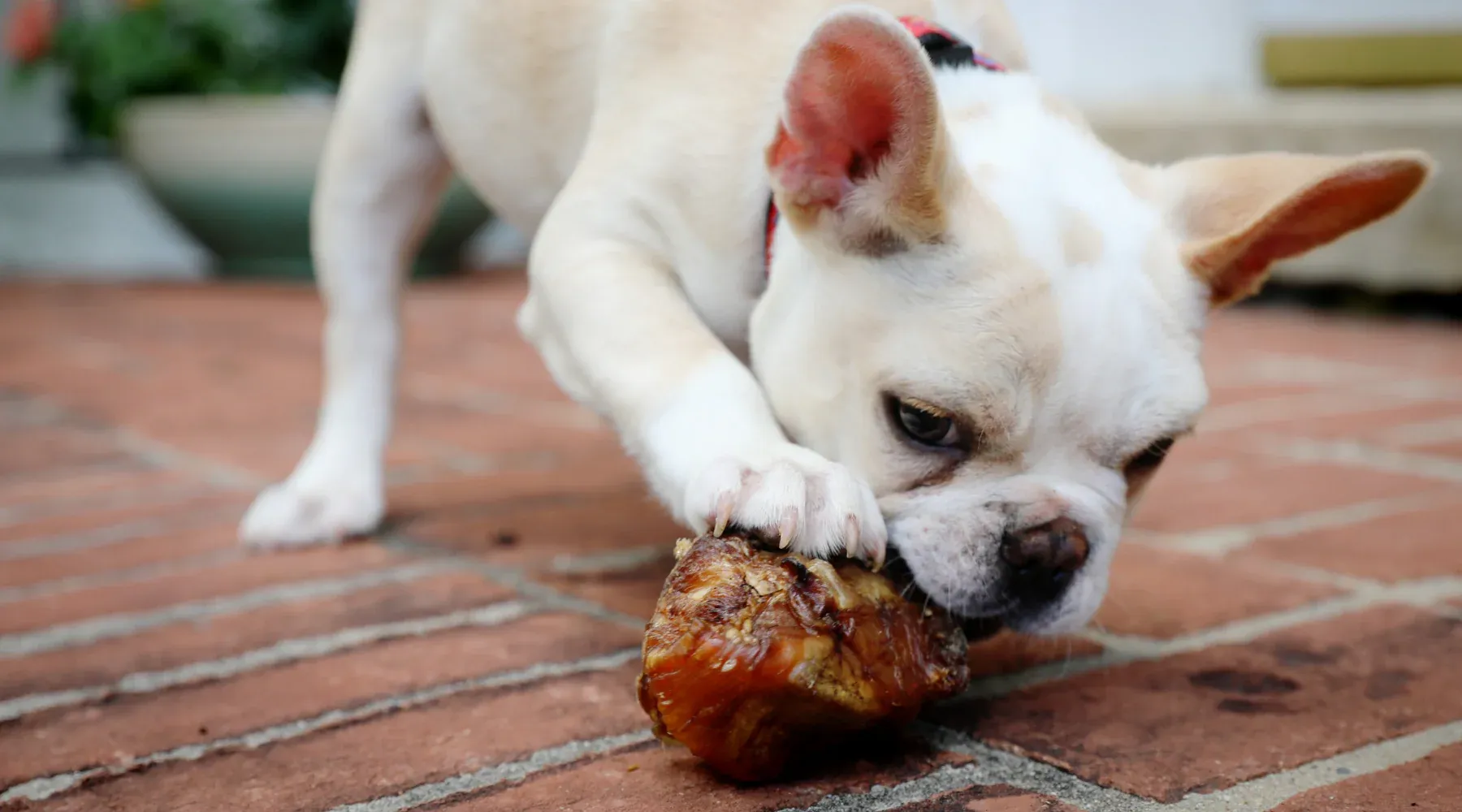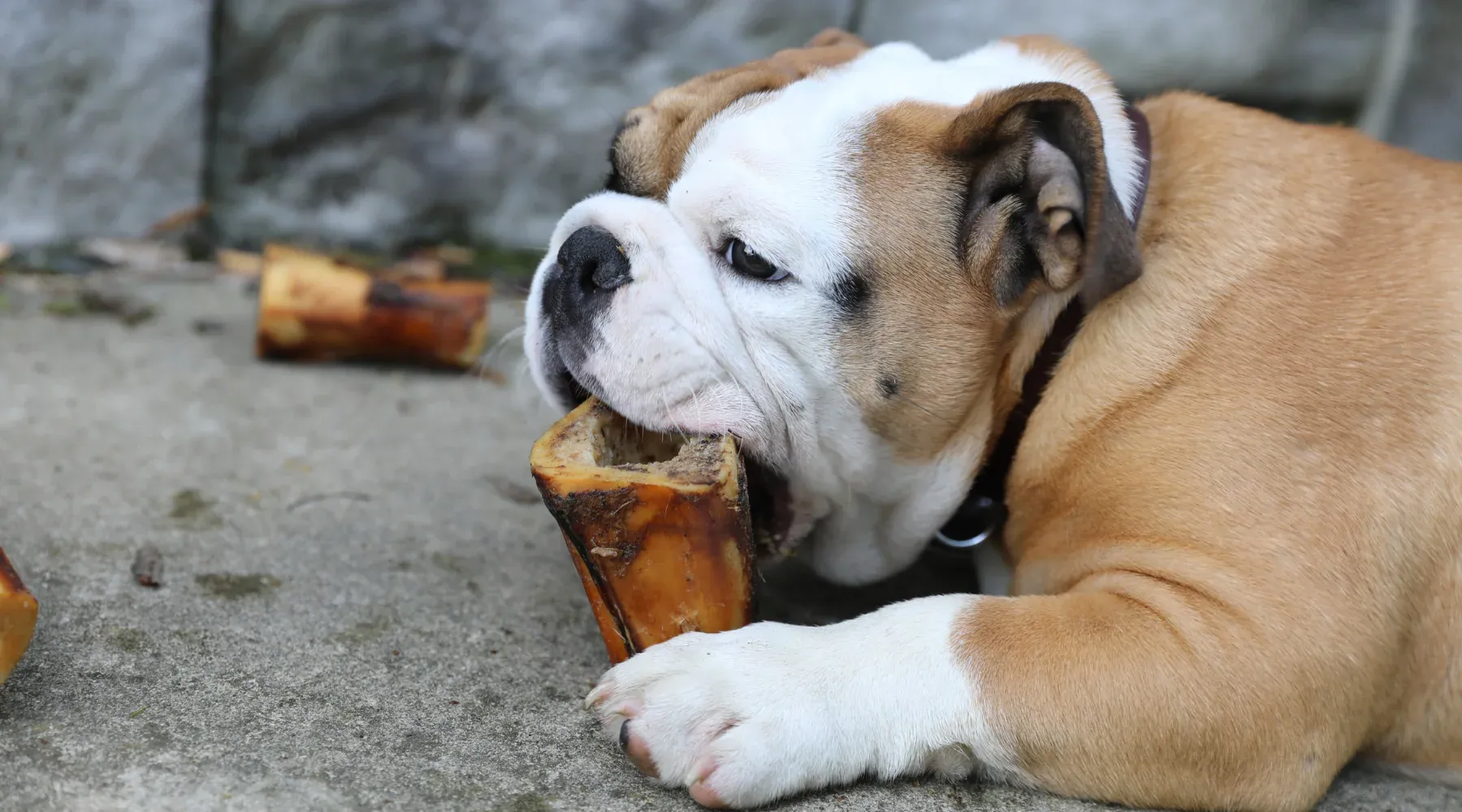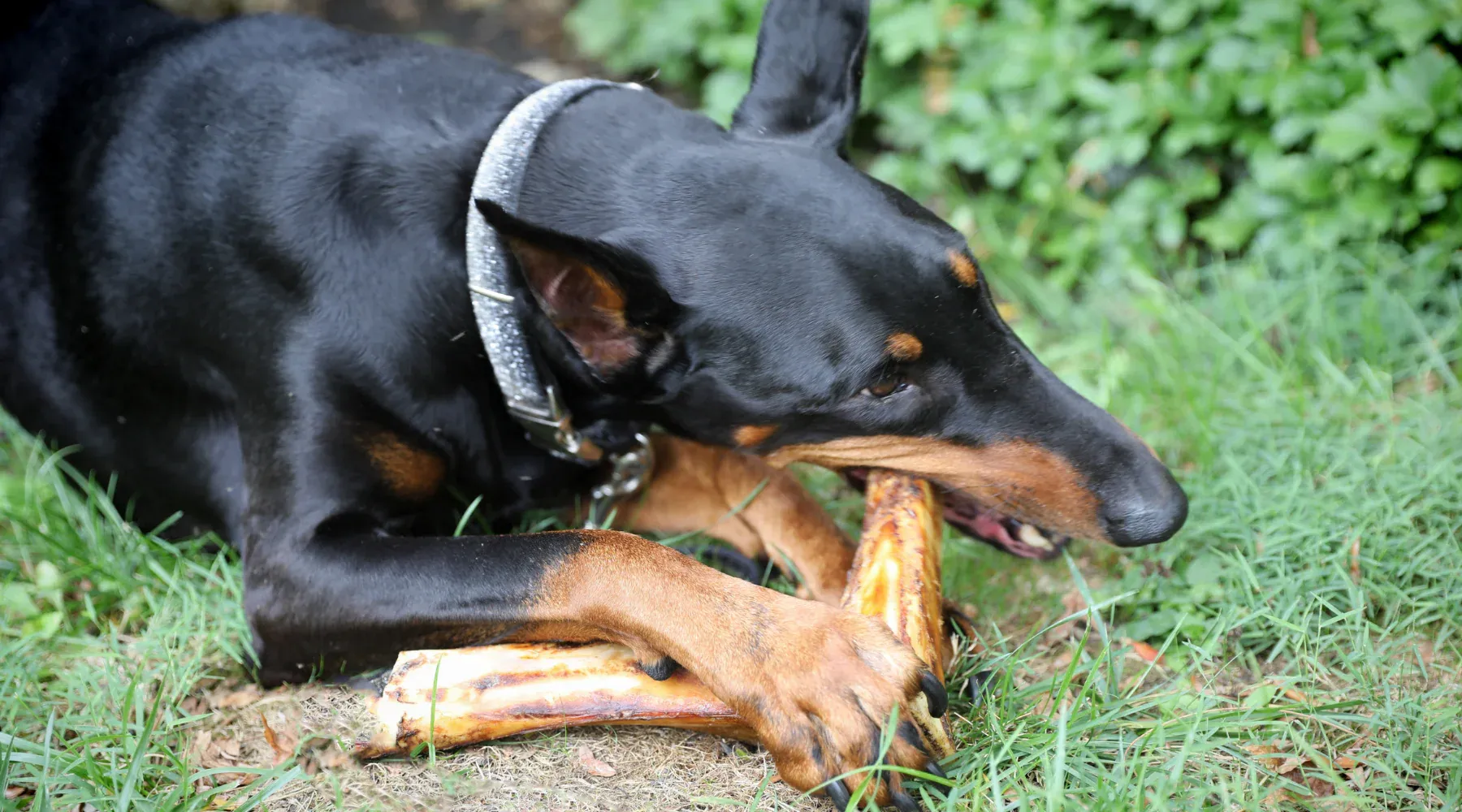Watching your dogs play in the backyard is pure joy—until one yelps and bolts for safety. That’s exactly what happened with my terrier, Pixie, when my gentle giant Bruno got a bit too enthusiastic. Bruno’s powerful jaws shred most dog bones in seconds, leaving sharp edges and swallowable chunks that spell danger. If you’re searching for the safest bone for aggressive chewers, you’re not alone. Many owners face this challenge, and after testing countless options, I’ve pinpointed what truly works without compromising safety or health.
For powerful chewers like Bruno, everyday bones quickly become hazardous. They need durable options that provide dental benefits, nutrition, and long-lasting entertainment. In this guide, we’ll explore common pitfalls and reveal the top choice backed by veterinary insights and real-world experience. Best long lasting chew bones for large dogs can make a huge difference, but let’s start with what to avoid.
 Dog bones for large dogs aggressive chewers.
Dog bones for large dogs aggressive chewers.
Why Rawhide Isn’t Safe for Aggressive Chewers
Rawhide chews line store shelves, but they’re far from ideal, especially for dogs with strong jaws. Veterinary experts, including those from the American Kennel Club, warn against them due to serious risks.
Rawhide swells in the stomach, creating choking hazards as it breaks into large pieces. It can also cause intestinal blockages, requiring costly surgery. Processed with chemicals like formaldehyde for preservation, rawhide offers little nutrition—just empty calories. Aggressive chewers demolish them fast, missing out on gum health and plaque reduction.
Steer clear if safety is your priority. Real bones provide better alternatives without these downsides.
Synthetic Bones: Durable but Questionable
Nylon, rubber, or plastic synthetic bones promise toughness, often fortified with vitamins for dental perks. However, they’re not the safest bone for aggressive chewers. Pieces can chip off, leading to ingestion and digestive upset. Artificial flavors and colors add unnecessary chemicals to your dog’s diet.
While some hold up, they lack the natural nutrition of meaty bones—like glucosamine for joint health. Vets note microplastics from synthetics aren’t ideal for long-term chewing. For power chewers, dog chew bones for aggressive chewers made from natural sources outperform plastics every time.
Wood Pulp Bones Fall Short Too
Wood pulp bones mimic natural sticks, a seemingly harmless choice. Dogs chew branches in the wild, but processed versions splinter easily under aggressive pressure. Vets at Mill Creek Veterinary Clinic advise against sticks due to tooth fractures and mouth injuries.
Cellulose offers zero nutrition, acting more as filler. They’re better than rawhide but unreliable for intense chewers—splinters pose puncture risks.
Raw Marrow Bones: Nutritional but Risky
Raw beef marrow bones deliver protein, fats, and minerals dogs crave in nature. Yet, they’re not the ultimate safest bone for aggressive chewers. Salmonella and E. coli contamination is a real threat, per FDA guidelines, endangering pets and families via licks or handling.
Splintering leads to choking or blockages, and they’re messy indoors. Limit to supervised outdoor use, but better options exist.
Cooked Bones: A Tricky Balance
Home-cooked bones turn brittle if overdone, shattering into dangers. Undercooked ones risk cracks. Professionals can slow-cook safely, but consistency varies. Always consult your vet before experimenting.
 Beef Knee Cap Bones for Dogs
Beef Knee Cap Bones for Dogs
For small breeds up to 15 lbs, like Pixie, opt for knee caps or thin femur slices. They provide hours of chewing without overwhelming tiny jaws. My terrier thrives on single-ingredient options that don’t splinter, promoting healthy teeth and reducing anxiety.
Conventional Marrow Bones Have Drawbacks
Even cooked conventional marrow bones raise concerns. Factory-farmed cattle endure poor conditions, yielding higher saturated fats and fewer omega-3s or CLA—up to 6x less than grass-fed, according to WebMD. Nutrition suffers too: less protein, iron, and vitamins.
Grass-fed alternatives support better health, aligning with ethical standards and superior profiles.
The Safest Bone for Aggressive Chewers: Grass-Fed Marrow Bones
After exhaustive trials, grass-fed marrow bones, professionally slow-cooked, reign supreme. They’re all-natural, dense yet tooth-friendly, and nutrient-dense with collagen for joints, glucosamine, and healthy fats.
Slow cooking preserves benefits while preventing splinters. Chewing scrapes tartar, massages gums, and satisfies instincts for mental wellness. Studies from the Journal of Veterinary Dentistry confirm rawhide-free bones excel for dental hygiene.
Tailor by size for safety:
Medium Dogs (16-50 lbs)
 Filled Dog Bones for Medium Dogs
Filled Dog Bones for Medium Dogs
Center-cut bones offer the perfect chew—tough but not extreme. My mid-sized dog gnaws for an hour straight, building endurance without frustration. Best safe chew toys for dogs complement these for variety.
Large Dogs (50+ lbs)
 Beef Marrow Bones for Large Dogs
Beef Marrow Bones for Large Dogs
Knuckle or shank bones withstand power jaws like Bruno’s. They last multiple sessions, minimizing waste. Always supervise, discard when worn, and rotate with best chew toys for dachshund puppies for puppies transitioning.
tough dog toys for chewers uk are great regional picks too.
Final Thoughts on Choosing Bones
Prioritize grass-fed marrow bones for aggressive chewers—they balance safety, durability, and nutrition unmatched by alternatives. Consult your vet for breed-specific advice, monitor sessions, and source from reputable suppliers.
Your dog’s joyful gnawing awaits. Explore more chew guides on our site for tailored tips!
References
- American Kennel Club: Rawhide Safety Guidelines
- FDA: Risks of Raw Pet Foods
- WebMD: Grass-Fed Beef Nutrition
- Journal of Veterinary Dentistry: Chewing Benefits for Dogs
- Mill Creek Veterinary Clinic: Stick Chewing Hazards
